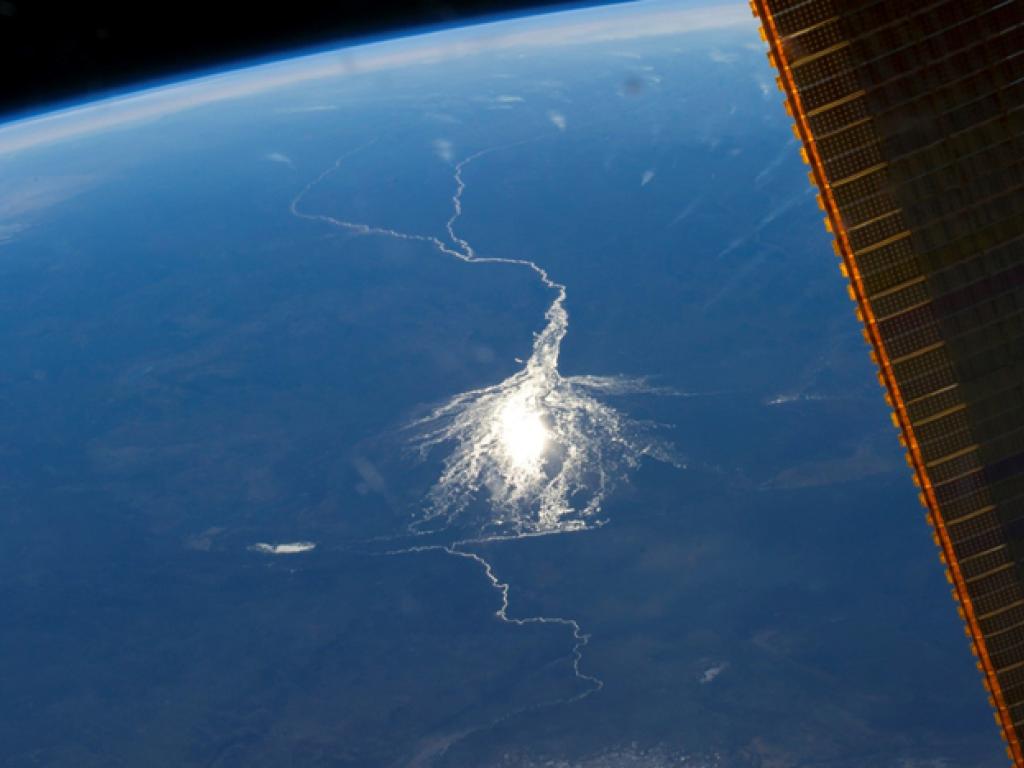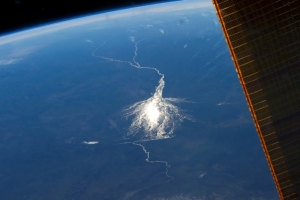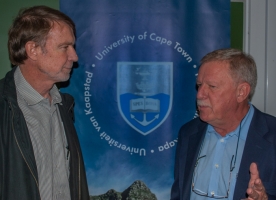Complex Relationships Control Okavango


Kalahari: Looking like a nerve synapse from the air, the Okavango alluvial fan is controlled by its biota in a unique give and take system, said geoscientist Emer Prof Terence McCarthy at the annual Science Faculty Distinguished Alumni Lecture. (Images courtesy of Terence McCarthy.)
The secrets of Okavango’s delicate but robust ecosystem are rooted in a unique give and take exchange involving the geology, geochemistry, and flora, said alumnus Terence McCarthy. McCarthy delivered the annual Science Faculty Distinguished Alumni Lecture at UCT on 16 September, titled ‘Unravelling the Okavango’.
An emeritus professor in the School of Geosciences at the University of the Witwatersrand, McCarthy has contributed more than 30 years of research to the study of the Okavango Delta ecosystem, “terra incognito”, as it was then, and other southern African wetlands.
The Okavango, an alluvial fan and not a delta, is a network of waterways, islands and levees, some 250km from top to bottom, and made up of permanently flooded, seasonally flooded and occasionally flooded regions.
Poorly understood
McCarthy said that although by the 1970s various government agencies had generated good maps, aerial photographs and a large body of hydrological, geological and climatic information on the Okavango, its ecosystem was little understood.
Why did the channels of water through dense papyrus change form and direction over the years? What caused blockages of papyrus in the channels? How did the levees form? What role did hippos and elephants play − and even termites?
It’s taken years of field trips and collaborations (McCarthy worked with a corps of multidisciplinary experts that included UCT’s Emeritus Professor Heinz Ruther and Emeritus Associate Professor Charles Merry, among others) for him to piece together the puzzle of this complex ecological system.

Honoured guest: Dean of Science Prof Anton le Roex (left) in conversation with Emer Prof Terence McCarthy who delivered the annual Science Faculty Distinguished Alumni Lecture at UCT. (Image courtesy of Gregor Leigh.)
Sedimentation rules
Mostly, sedimentation drives change in the Okavango, says McCarthy.
“But the processes that regulate sedimentation are almost all biological in origin.
It’s managed by the biota and is constantly changing, a remarkably resilient system.”
Some of the fieldwork was conducted from a houseboat, a ‘platform’ from which McCarthy and his research team surveyed the network of waterways, islands and levees between Shindi to Shakawe.
“We sailed up the Nqoga channel from the distal end to the headwaters in a houseboat in 1987. By 2002 the channel had disappeared; the trees had died on the surrounding islands, which had ‘drowned’ and filled with papyrus. A new channel had formed elsewhere.”
Curiously, these new channels also “nucleate” on trails on the bed beneath the water used daily by hippos to access the vegetation on the island and banks. This network of hippo trails picks up surface flow, erodes the bed, and forms new channels.
“This is very important for the ecosystem,” said McCarthy. “Elephants too use trails to cross from island to island, contributing to the changes, though they have less of an impact on the Okavango ecosystem.”
Another mystery was the absence of salt in the Okavango, though many of the islands were crusted with sodium bicarbonate, with concentrations in the middle. Yet the groundwater under the islands contains salt, attributed to the trees and other vegetation zones clinging to the edges of these islands.
Curiously, the water table under these islands is also lower than the swamps themselves, and at night the water levels rise at the edges, due to transpiration from trees.
It was also found that, when in flood, the water moves in “steps” across the Okavango, as shown in the water profile.
“The vegetation is so powerful [dense] and grows so vigorously that it prevents flow.”
Researchers also linked the Okavango’s flood cycles to series of sunspots in the atmosphere.
(McCarthy is winner of the Jubilee and Draper Medals of the Geological Society of South Africa and a Fellow of the GGSA and the Royal Society of South Africa.)
Story by Helen Swingler.
